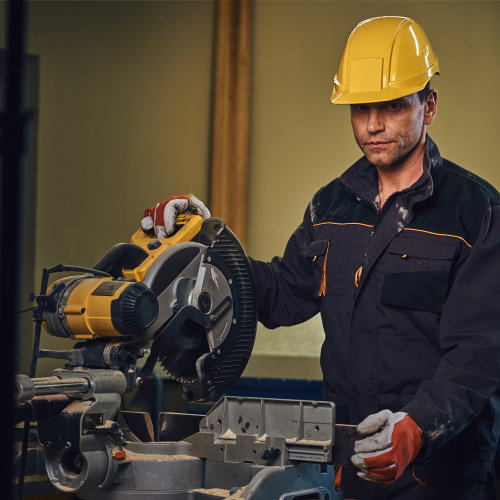OSHA’s #10 Most Cited Violation of 2025: Machine Guarding (1910.212)
Rank: #10 — 1,239 Violations (FY 2025) Industry Focus: Manufacturing, Fabrication, Warehousing, and General Industry

The Guard That Wasn’t There
Every year, OSHA releases its list of the Top 10 Most Frequently Cited Violations.
And every year—like clockwork—Machine Guarding (29 CFR 1910.212) finds itself near the top.
In 2025, it holds the #10 spot with 1,239 violations, showing a modest decrease from last year but still signaling a serious and persistent safety issue.
As Lorraine Martin, CEO of the National Safety Council, emphasized at the 2025 NSC Congress & Expo:
“Yesterday’s hazards are still today’s vulnerabilities.”
At Advanced Safety & Industrial Supply, we see this every day: machines that should be guarded aren’t. The result? Avoidable injuries, costly citations, and downtime that could have been prevented with a few simple steps.
What Is Machine Guarding—and Why It Matters
Machine guarding is one of the most fundamental safety requirements in any industrial setting.
The OSHA standard 1910.212 requires that employers install “one or more methods of guarding” to protect operators and nearby workers from hazards created by:
-
Points of operation
-
Ingoing nip points
-
Rotating parts
-
Flying chips or sparks
These guards must be affixed securely and designed to prevent contact—not create new hazards.
Yet, violations persist. Why?
Because workers often remove guards for convenience, companies fail to inspect them regularly, and new machinery isn’t always properly evaluated for guarding needs.
Common Machine Guarding Violations
Here’s where companies often fall short:
-
No guard installed – especially around belts, pulleys, and rotating shafts.
-
Improper design – openings are too large or allow hand access.
-
Guards not anchored – easy to remove or bypass.
-
Lack of inspection – broken, bent, or missing guards overlooked.
-
Poor training – employees don’t understand why guards matter or how to report damage.
-
No documentation – no record of guard checks, audits, or corrective actions.
The Cost of Noncompliance
The price of skipping a $300 guard?
An average OSHA fine of $14,000 per violation, plus the immeasurable cost of worker injuries.
A single amputation or entanglement injury can result in:
-
Workers’ compensation claims exceeding $100,000
-
Lost production and retraining costs
-
Reputational damage
-
Potential criminal liability for willful neglect
When you add it all up, machine guarding isn’t expensive—injuries are.
How to Stay Compliant
You can avoid being part of OSHA’s next statistic by taking proactive steps:
✅ Perform a hazard assessment for every piece of equipment.
✅ Inspect guards regularly — include them in your preventative maintenance program.
✅ Train employees to recognize guarding hazards and report issues immediately.
✅ Lockout/tagout before service — guards don’t replace proper energy control.
✅ Document everything — audits, corrective actions, and training logs.
Machine Guarding Safety Checklist
Download our free “10-Point Machine Guarding Audit Checklist” to help your team quickly identify risks and compliance gaps.
Quick self-check
Are all moving parts guarded?
Can guards be removed without tools?
Are inspection logs up to date?
Have operators been trained in guard safety?
Do guards prevent access without obstructing operation?
If you answered “no” to any of these, it’s time to take action.
Advanced Safety Supply Can Help
At Advanced Safety & Industrial Supply, we specialize in helping manufacturers and safety professionals protect workers through:
-
On-site safety audits and training
-
Machine guarding inspections
-
Lockout/tagout compliance programs
-
Custom PPE sourcing for machine operators
Don’t let a missing guard cost your company its next big citation.
Schedule a workplace assessment today.
Call us at (615) 739-3278 or visit AdvancedSafetySupply.com
Let our team help your facility reduce citations, prevent accidents, and protect your workforce.
Call (615) 739-3278 or Contact Us now to schedule training or an onsite evaluation.


















